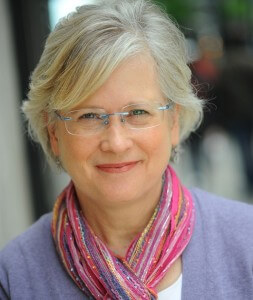 Our thanks to Sandra Beckwith of Build Book Buzz for this guest post!
Our thanks to Sandra Beckwith of Build Book Buzz for this guest post!
While attending uPublishU at Book Expo America as a speaker at the end of May, I sat in on several excellent panel presentations. One that I found particularly helpful shared the results of testing that BookBub has done on the text used to describe books offered for sale in its daily newsletters.
The company did A/B testing of different text elements. A/B testing basically means that they sent newsletters with “copy A” to one part of their list and newsletters with “copy B” to another part of the list, and then compared sales results for each version. Each A/B mailing tested a different variable.
The results are fascinating – and they will help you as you write the text for your Amazon sales page, your website, your book announcement press release, your e-mail announcement, and other promotional materials that will help you sell more books, too!
Here are the lessons from BookBub’s research:
- Quote a person, not a publication. When adding a blurb to your description (“A must for your beach read bag!”), quote an author, not a publication. Tests showed that descriptions with an endorsement from an individual sold more books than descriptions with blurbs from the press, such as Publishers Weekly.
- Help your target audience see themselves in your description. “If you love thrillers, don’t miss this action-packed read!” sold more books than “An action-packed read!” In other words, tell sweet romance readers, history lovers, etc., that your book is for them. Don’t force them to figure it out for themselves.
- For historical fiction, add a time period. Again, you’re helping your target audience by saying, “This is for you.”
- Tell people you have good reviews. Citing the number of Goodreads reviews sold more books than not referencing them at all. I have to admit that this trick does work with me. I buy through BookBub regularly and when I see that there were 500 five-star reviews on Amazon, I pay attention.
- When you’ve got reviews on Amazon and Goodreads, reference the higher number. In the example presented, the description that referred to more than 1,000 give-star reviews on Goodreads sold more books than the description that referenced more than 150 five-star reviews on Amazon. It’s the number of good reviews then, not the site of the reviews, that matters.
- Include awards. If your book won an award, mention it. You’ll sell more books.
Here’s what didn’t matter:
- Bestseller type (New York Times vs. USA Today, for example)
- Posing a hook as a question rather than as a statement
- Mentioning the age of the protagonist
- Mentioning it’s the author’s debut book
To learn more, download BookBub’s uPublishU presentation with the data at http://insights.bookbub.com/bea-halli/.
 Sandra Beckwith is an award-winning former publicist who now teaches authors how to promote their books through her free Build Book Buzz newsletter, blog, individual coaching, and online training programs. Sandra is also a participant in our Winner Circle, offering members sample press releases and tip sheets in our “Templates and Tutorials” section. Join now at https://writerswin.com/join-today/ to take advantage of all the ways we “shrink the web” for authors, including access to live book clubs, indie bookstores, vetted book reviewers by genre and more!
Sandra Beckwith is an award-winning former publicist who now teaches authors how to promote their books through her free Build Book Buzz newsletter, blog, individual coaching, and online training programs. Sandra is also a participant in our Winner Circle, offering members sample press releases and tip sheets in our “Templates and Tutorials” section. Join now at https://writerswin.com/join-today/ to take advantage of all the ways we “shrink the web” for authors, including access to live book clubs, indie bookstores, vetted book reviewers by genre and more!

Thank you for sharing such these much valued tips.
Thanks Sandra, nice to read this tips. As a front of the room trainer, I have deliberate strategies similar to bring attention to my book.
I like this one:
Here’s what didn’t matter: Bestseller type (New York Times vs. USA Today, for example)
… Michael
This is great information to have. Thanks for the tips!
You’re quite welcome, Peter – write on!
I’m so glad you found it helpful, Peter. Thanks for the comment!
Sandy